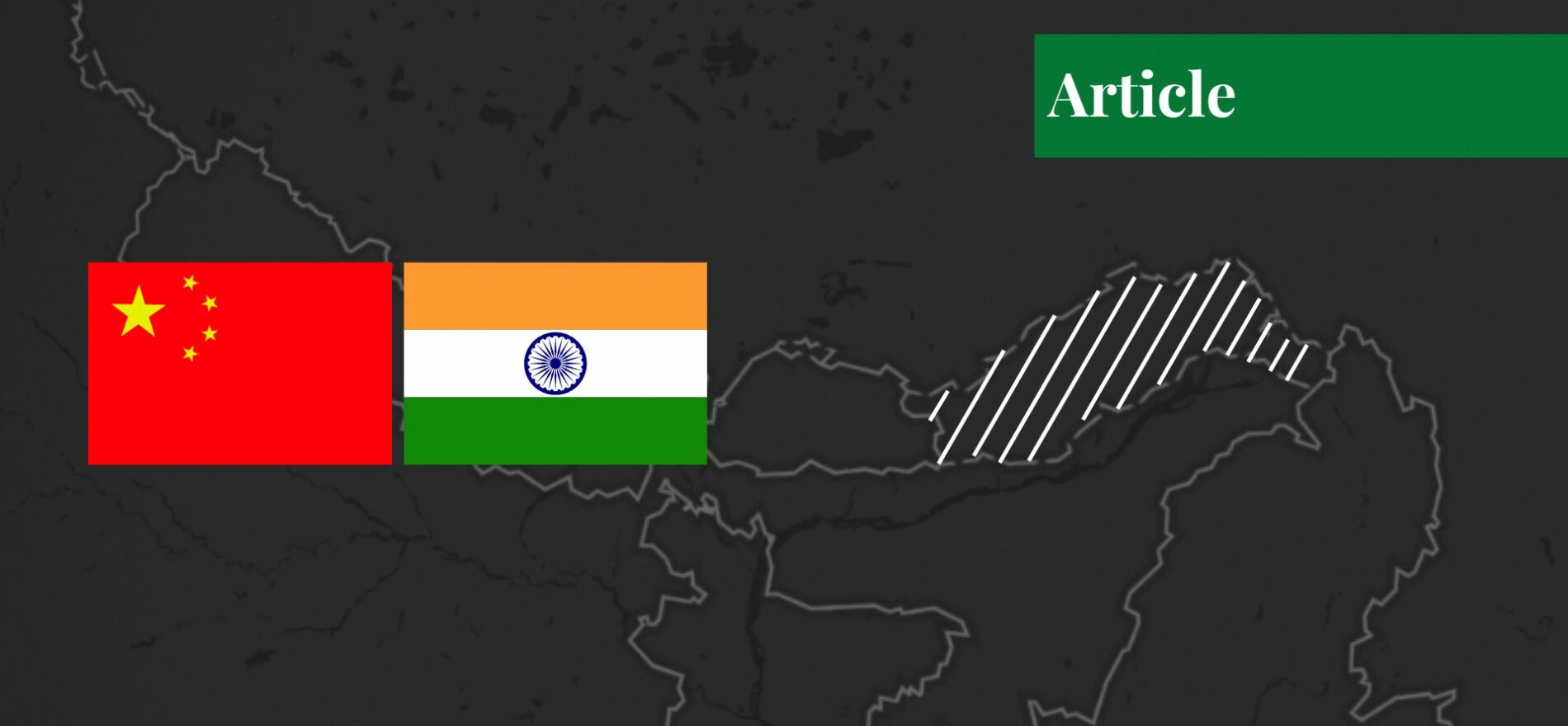Mahnoor Najeeb completed her Bachelor's in Public Policy from NUST. She has a keen interest in global politics and international conflicts.
Background
The 2400-kilometer-long Himalayas borders the two most powerful rising powers of Asia, China and India. The relations between the two countries began when they gained independence in the late 1940s, but relations worsened when the People’s Republic of China exerted control over Tibet. Consequently, the Dalai Lama of Tibet fled and took refuge in India in 1959.
Despite prior agreements of safeguarding their boundaries and disputed territories, continuous and violent stand-offs began. The first skirmishes took place when India discovered that China had been building roads on India’s self-proclaimed territory. The most significant border conflict occurred in 1962, with the war happening on two fronts: one in Ladakh and the other in Arunachal Pradesh.
In Arunachal Pradesh, the Indian army faced opponents in Walong and Tawang. In the end, China reached its goal of retaining large swaths of land near northwestern India called Aksai Chin. Since then, there have been numerous border conflicts. The most contentious areas include the northwestern Himalayan region known as Ladakh, the Doklam plateau, a territory between India, Bhutan, and China, and Arunachal Pradesh in the eastern region of India which China claims as Tibetan territory.
The McMahon Line drawn by Henry McMahon, the British foreign secretary of colonial India in 1914, marked the border of Arunachal Pradesh. In addition to this, boundary lines were drawn between Tibet, but they were not formally accepted by China.
During the two-decade period from 1993 to 2013, both countries struck agreements regarding the disputed territories. Both sides would get to patrol the region, and none would exert permanent control over the region. This solution known as the Line of Actual Control maintains a temporary border, but even the location of the border is not fully agreed upon.
In 2013, a dispute occurred in Demchok near Ladakh, and another in 2015 where Indian soldiers destroyed Chinese-built structures. Tensions started to further boil over near the Doklam plateau. In 2017, China brought in heavy machinery and started to construct a road that would give China a direct route to the Siliguri corridor, the area through which all land-based military and commercial traffic travel into India.
The relations turned more violent soon after the pandemic broke out in 2020 when China surprisingly deployed troops in Ladakh. China claimed that India’s recent construction of roads, tunnels, and refurbishments of airfields in the area along the border challenged the status quo and forced China to respond. Skirmishes continued and at least 4 Chinese soldiers and 20 Indian soldiers were killed.
Violence along the border soon ended but construction did not. In 2021, China completed the construction of a village on the Doklam plateau called Pangda which has added more fuel to the fire.
Recent Clash
China and India, two of the most powerful nations of the Asian region, have violently confronted each other on multiple occasions in history. On 9th December, they came face to face in the Tawang region of Arunachal Pradesh. China and India share a disputed border stretching far beyond 3000 km, often called the Line of Actual Control (LAC) in the Arunachal Pradesh region.
The People’s Liberation Army (PLA) of China was equipped with clubs, sticks, and other equipment and ferociously engaged with three different Indian battalions including Jammu and Kashmir Rifles, the Jat regiment, and the Sikh Light Infantry. According to reports, one of the units of the Indian Army was on its way when the Chinese military attacked. Another report further added that “both sides disengaged from the area.”
In a parliamentary meeting, Rajnath Singh, India’s Defense Minister, claimed that the violent encounter started when Chinese troops “encroached into Indian territory” and “unilaterally tried to change the status quo” alongside the disputed territory. Singh further said that no Indian soldier was brutally hurt or injured and that the Indian Army was successful in preventing the offenders from transgressing the territory.
Significance of Arunachal Pradesh
The Tawang region of Arunachal Pradesh has immense significance for both nations. An important Tibetan Buddhist monastery, a place believed to be the birthplace of the sixth Dalai Lama in 1963, combined with Tibetan politics are believed to be supreme reasons for China’s interest. China has even claimed the entire region of Arunachal Pradesh as “Southern Tibet” or “Zangnan”.
Another reason for China’s obsession with the Arunachal Pradesh region is a high concentration of Tibetan people in the region which China fears India will use for its own advantage and facilitate pro-democratic Tibetan movements against China. Arunachal Pradesh also serves as a strategic location for China to surround Bhutan from the eastern front. This will not only allow China to intrude into Bhutan but also create a security threat for India.
To India, the region is a strategic location for defending north-eastern India and increasing its influence. Also, through the Arunachal Pradesh region, China will attain enough power to control India’s water supply. China has already constructed dams on River Yalung Sangpo and River Brahmaputra. Hence, by controlling water flow from both rivers, China can use water as a geo-political weapon against India.
Conclusion
The recent skirmishes have baffled a lot of experts, and this is primarily because of the smooth meetings between President Xi and Prime Minister Narendra Modi during G-20 meetings in November. However, at the same time, the Tawang incident was also predictable because of China’s enhanced investment in border security infrastructure and continuous military exercises.
Despite this, there are very few chances of increased escalation according to various security experts. It is because both sides are tied with their peaceful border agreements and their nuclear weapons capacity that serves as a mutual deterrence technique.
If you want to submit your articles and/or research papers, please check the Submissions page.
The views and opinions expressed in this article/paper are the author’s own and do not necessarily reflect the editorial position of Paradigm Shift.



















